Japandi Interior Design and Danish Hygge Style have been gaining a lot of popularity due to their unique blend of features. This trend blends Japanese and Scandinavian styles, creating a cozy yet minimalist home ambiance. At the heart of this design style lies ten design elements that combine the two cultures.
Japandi interior design trend merges Japanese design with the Danish Hygge style and lifestyle. Hygge is about enjoying life with your family and close friends and having a warm and cozy space to do that. The Japandi interior design trend uses many elements of the Danish Hygge concept and style for their home decor spaces.
Table of Contents
- Japandi Interior Design Trend And The Danish Hygge Life Concept
- 10 Design Elements of the Japandi Interior Design and the Danish Hygge Concept
- Danish Hygge Is About Creating A Warm And Cozy Interior With Japandi Interior Design
- Danish Hygge, Comfort, And Japandi Interior Design Trend
- Danish Hygge And Cozy Textiles In The Japandi Interior Space
- Danish Hygge And Natural Wood For The Japandi Interior Design
- Neutral Color Palette And Japandi Interior Design And Danish Hygge
- Plants Are Important For Japandi Interior Design And Danish Hygge Style
- Natural Lighting Is Essential For Japandi Interior Design And Hygge Styles
- Candles And Other Light Are Important For Japandi Interior Design And Hygge Styles
- Minimalism Is Important To Japandi And Hygge Interiors
- Simple Artwork And Elements Work For Both Japandi And Hygge Interiors
- Frequently Asked Questions
- Related Content
Japandi Interior Design Trend And The Danish Hygge Life Concept
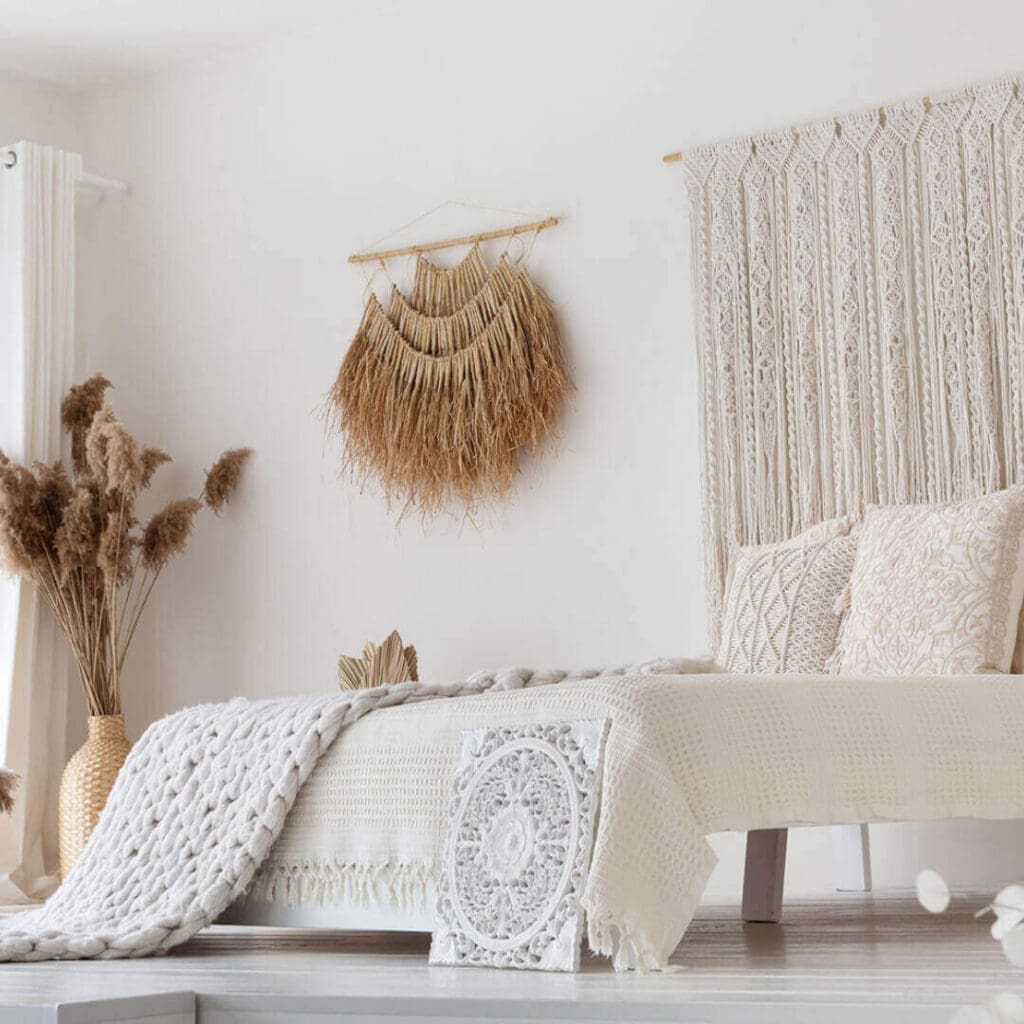
Japandi interior design trend is about merging Japanese design with the Scandinavian style; it is about joining east and west into one design style. At the heart of the Scandinavian design trend is the Danish concept known as Hygge.

In Denmark, Hygge is a concept that is defined as:
“Hard to pronounce, hygge (“hooga”) is difficult to explain, too. In brief, hygge is about taking time away from the daily rush to be together with people you care about – or even by yourself – to relax and enjoy life’s quieter pleasures.
Denmark.DK
The word hygge dates back to around 1800, at least in the meaning it has today.”
Hygge is not a new concept in Denmark and has been around for quite a while. It is more than just a design or style to the Danes. It is a way of life and living; that is why Denmark is consistently rated as one of the happiest places in the world.
Hygge is about taking time out to live life; it is about spending time with family and friends at home or another quiet location. Hygge is about celebrating life and living life with those you love around you.
For interior design, Hygge is about creating a warm, cozy atmosphere you want to come home to each day and a place you want to be. It is about comfort, joy, and life’s little pleasures.
10 Design Elements of the Japandi Interior Design and the Danish Hygge Concept
The Japandi Interior design trend is built upon the Japanese and Danish Hygge style and lifestyle. It is about the merging of these two elements.
Many Japandi design concepts have come about because of the Danish Hygge lifestyle. Here are our top 10 design elements:
Danish Hygge Is About Creating A Warm And Cozy Interior With Japandi Interior Design
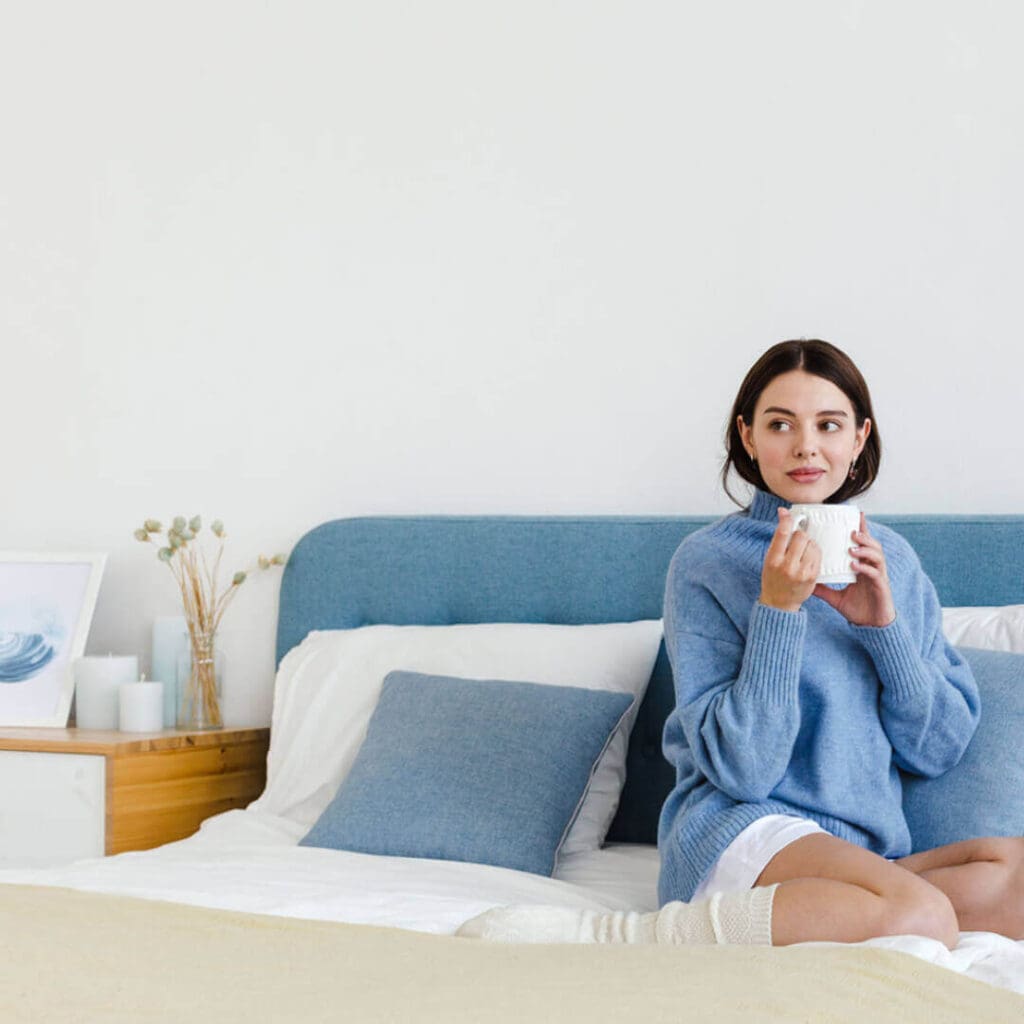
The Danish Hygge concept is about creating a warm and cozy interior to have a home you want to return to and that you will take time away from the daily rush, hustle, and bustle of life.
That is why one of the core elements of the Japandi style is warm and cozy. You want an interior you can live in and one you want to be in. You want to have a space that is inviting.
Danish Hygge, Comfort, And Japandi Interior Design Trend
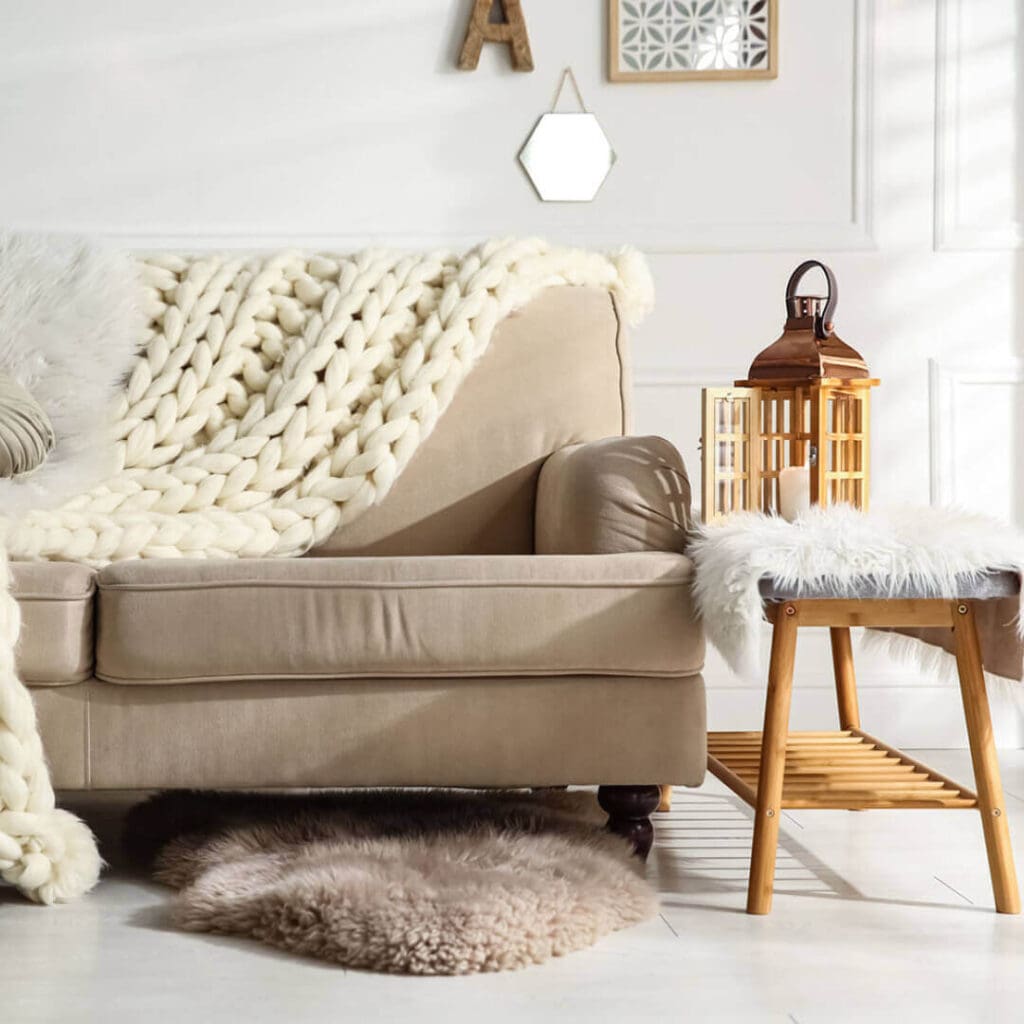
Another core element of the Japandi interior design trend is that you want a comfortable style. The home should have warm, comfy couches and chairs.
You want your home and space to be comfortable and have comfortable chairs and seating where people can sit and enjoy one another’s company. The Danish concept of Hygge is about getting together with your family and loved ones and enjoying each other’s company.
Danish Hygge And Cozy Textiles In The Japandi Interior Space
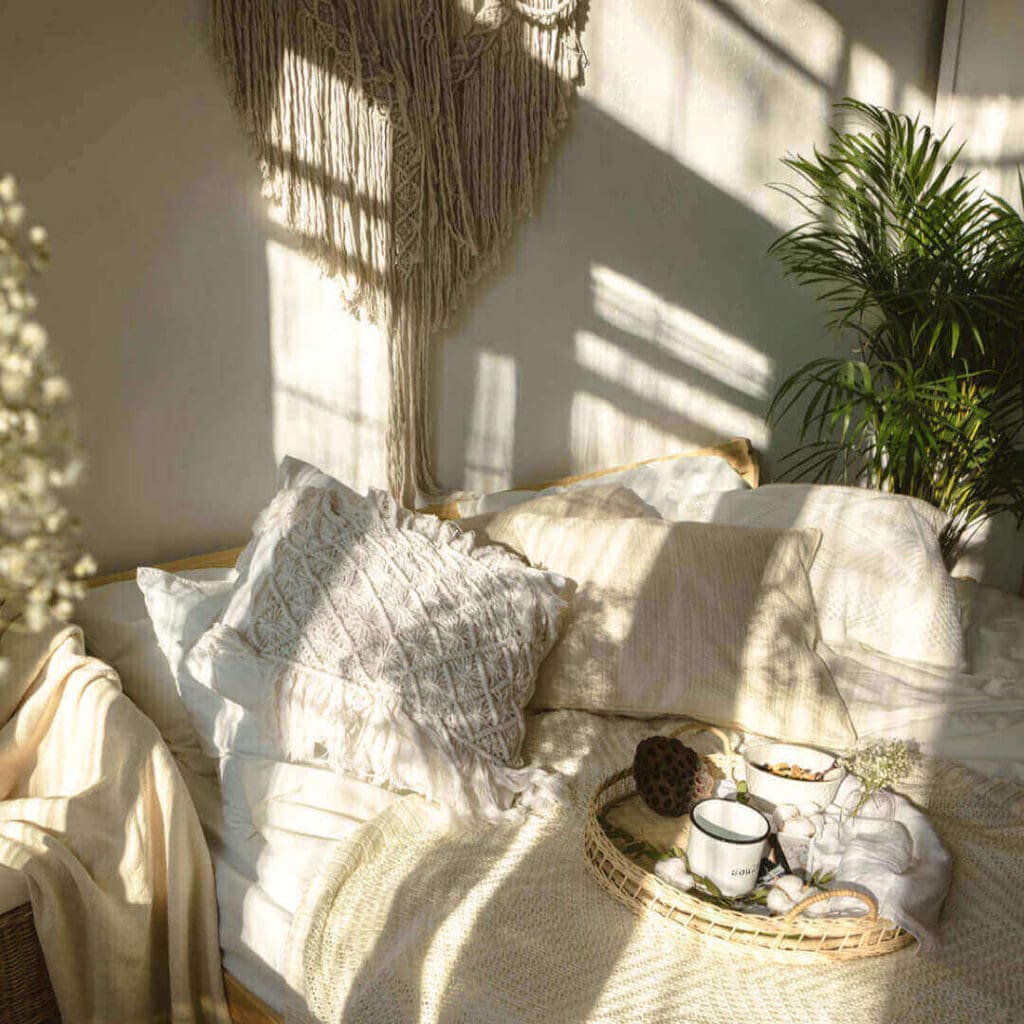
Another critical element is in the interior space. Hygge uses textiles that look and feel warm and cozy—things like knitted throws, blankets, and cushions that all promote comfort.
Coziness is again an essential element of Hygge which is an integral part of the Japandi Interior Design style.
Danish Hygge And Natural Wood For The Japandi Interior Design
A core element of the Japandi is the natural wood look and feel. Natural wood is also essential to the Hygge style, as wood is inviting and helps create a sense of warmth.
For the Japandi home, you want a warm yet aesthetically pleasing place with some natural wood interiors.
Neutral Color Palette And Japandi Interior Design And Danish Hygge
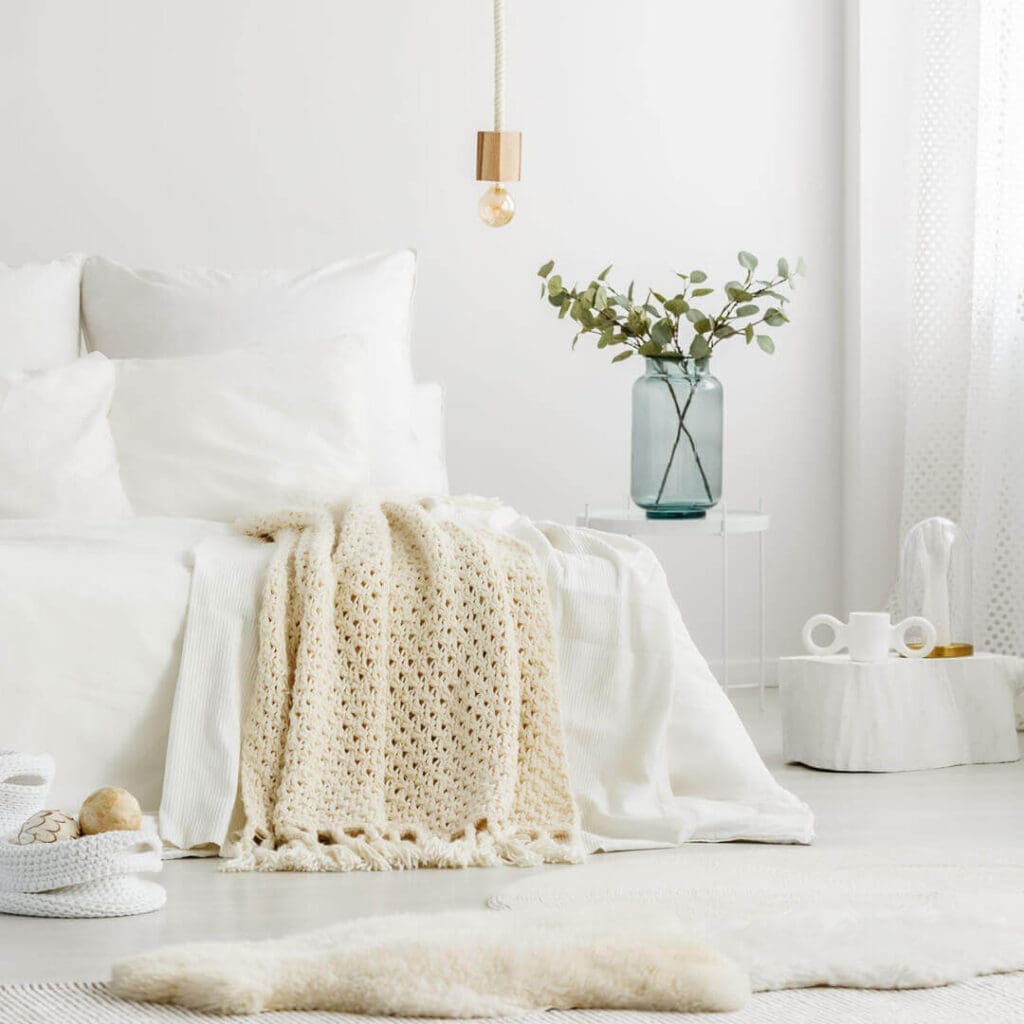
The core element of the Japandi interior design is the neutral color palettes. For the Danish Hygge, you also want to have neutral colors and create a cozy, warm atmosphere where everyone feels comfortable.
Neutral colors like whites, beiges, and greys are often used, as well as eggshells, alabaster, and even softer colors such as blues, pinks, and greens. Accent colors can include colors like Navy or black tones.
Plants Are Important For Japandi Interior Design And Danish Hygge Style
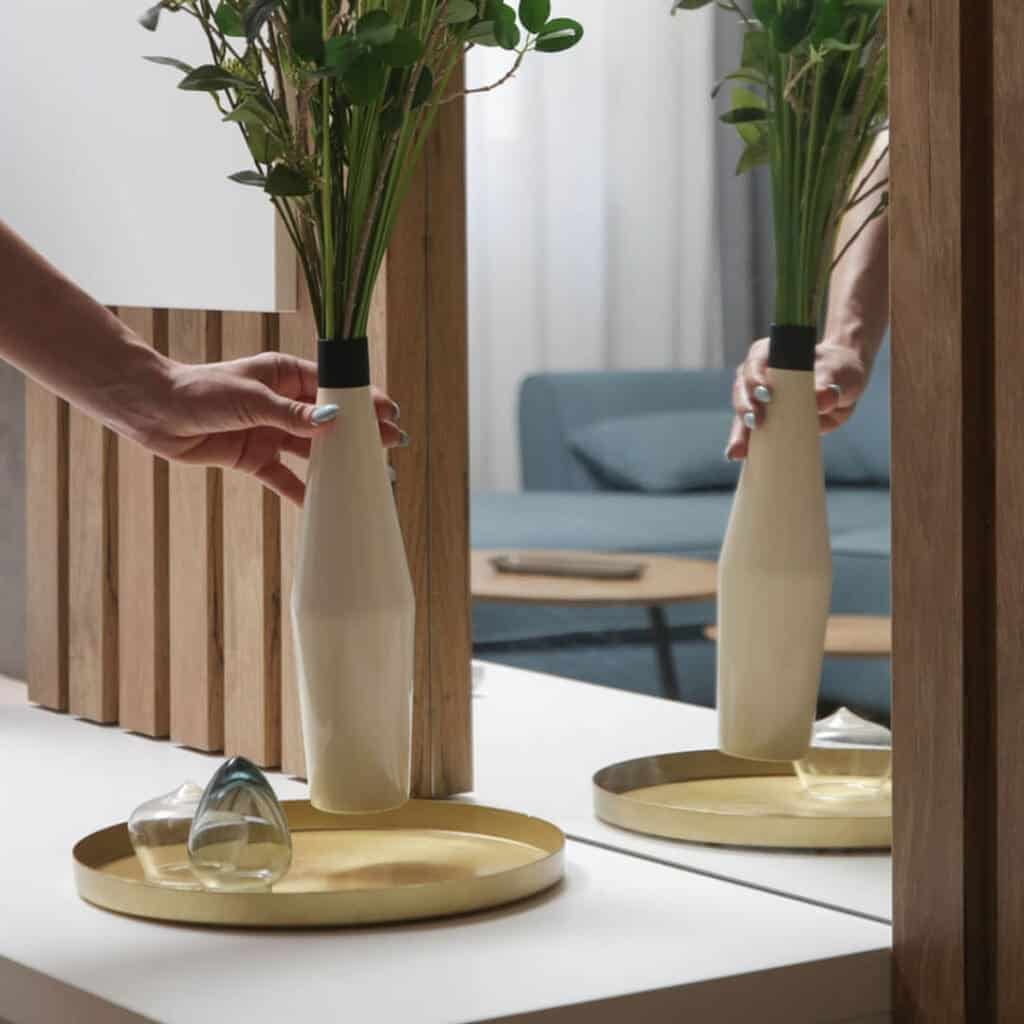
Plants are essential for both the Japandi style and the Hygge lifestyle. It brings nature into your home and introduces nature-inspired elements into your interior space.
Japandi’s interior design strategically places plants and greenery throughout the interior space.
Natural Lighting Is Essential For Japandi Interior Design And Hygge Styles

Natural lighting is essential for the Japandi style and the Danish Hygge style, and to have window coverings that will allow the natural light to come in. With the Japandi and Hygge style, you want to be able to have and see as much natural light as possible throughout the daytime
Candles And Other Light Are Important For Japandi Interior Design And Hygge Styles

An essential element of the Danish Hygge style is to have candlelight at night and lamps and lighting that can add to the cozy nature of the room. This style is also essential to the Japandi style, as you want an inviting and comfortable room.
Minimalism Is Important To Japandi And Hygge Interiors
Minimalism is a common theme in both the Japandi interior design and the Danish Hygge style. Keeping clutter to a minimum allows for better organization and innovative ways to store and organize things.
To achieve this look, simple lines and avoiding unnecessary clutter are essential for both the Japandi and Hygge interiors.
Simple Artwork And Elements Work For Both Japandi And Hygge Interiors
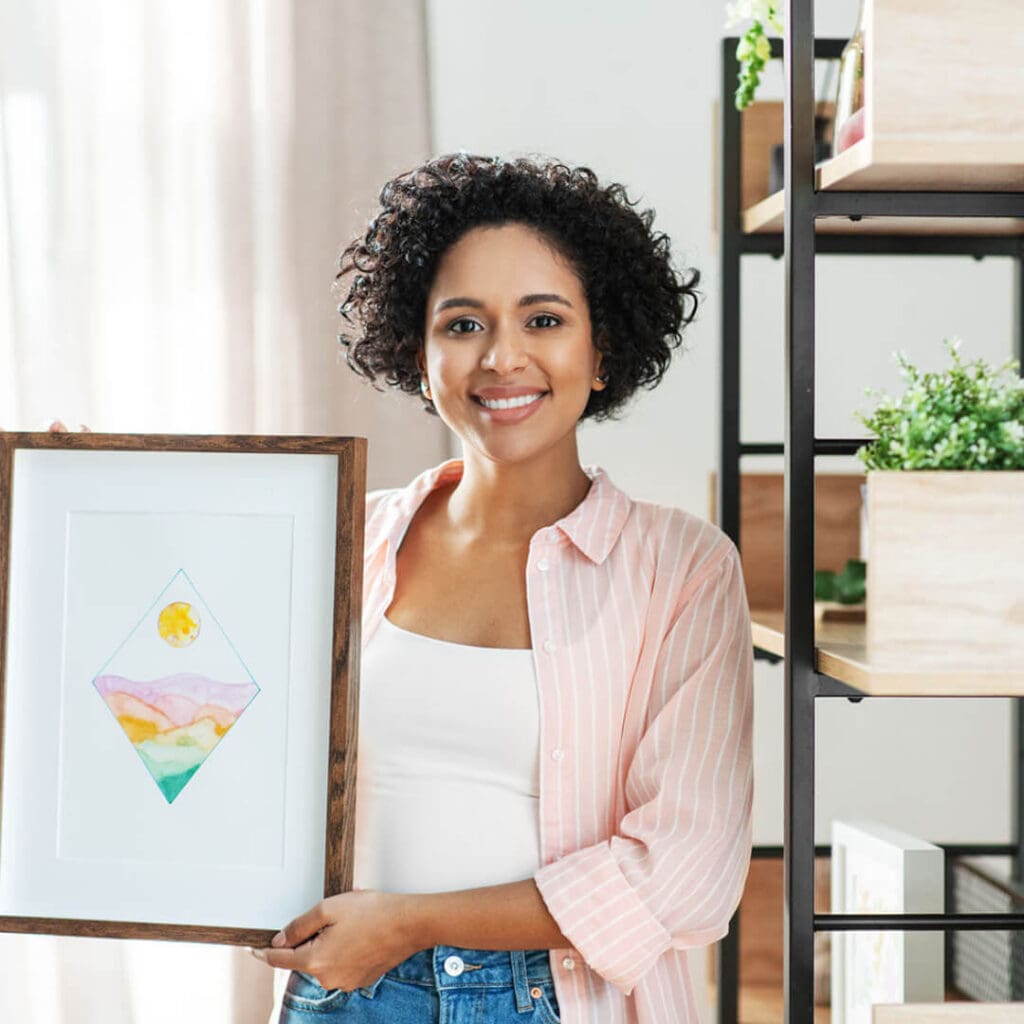
Simple art and decorations can play a vital role in bringing together different elements of Japandi and Hygge. Simple artwork, such as Japanese calligraphy, watercolor paintings, and small ceramics pieces, can add a touch of elegance to the interior.
Japandi is about merging these styles to make one unique style.
Combining these ten design elements creates a unique atmosphere that combines the best of Japan and Denmark into the Japandi Interior design trend. By blending natural materials, cozy furniture, minimalism, art, decorations, and nods to natural elements together in one space, homeowners can create a beautiful Japandi-styled home.
We will love to talk to you if you are interested in creating, developing, or manufacturing Japanese or Hygge-inspired home decor or home furniture items.
Find out more about how Mondoro can help you create, develop, and manufacture excellent home decor and furniture products – don’t hesitate to contact me, Anita. Check out my email by clicking here or become a part of our community and join our newsletter by clicking here.
Mondoro gives out a FREE Lookbook to anyone interested. You can receive a copy of our latest Lookbook by clicking here.
Listen to our Podcast called Global Trade Gal. You can find it on all major podcast platforms. Try out listening to one of our podcasts by clicking here.
Subscribe to our Mondoro Company Limited YouTube Channel with great videos and information by clicking here.
Frequently Asked Questions
What is Japandi Interior Design, and how does it differ from traditional Japanese and Scandinavian styles?
Japandi Interior Design is a fusion of Japanese and Scandinavian styles. It combines the simplicity and functionality of Scandinavian design with the minimalism and balance of Japanese aesthetics. While both styles individually focus on simplicity, Japandi adds warmth and coziness.
How does Danish Hygge contribute to the Japandi Interior Design trend?
Danish Hygge emphasizes creating a warm and inviting atmosphere for a cozy lifestyle. In Japandi, this translates into using natural materials, warm colors, and comfortable furnishings, reflecting the essence of Hygge within the minimalist framework of Japanese design.
What colors are commonly used in Japandi Interior Design?
Neutral tones dominate Japandi Interior Design, incorporating the earthy and muted color palettes of both Japanese and Scandinavian styles. Shades like soft grays, whites, and warm wood tones are prevalent, contributing to a calm and harmonious environment.
How does Japandi Interior Design promote sustainability and eco-friendliness?
Both Japanese and Scandinavian design philosophies value sustainability and natural materials. Japandi incorporates elements such as bamboo, recycled wood, and organic fabrics, emphasizing a connection to nature and eco-conscious choices.
Can you mix and match furniture styles in Japandi Interior Design?
Yes, Japandi encourages the blending of furniture styles. Combining Scandinavian clean lines with Japanese craftsmanship creates a harmonious yet eclectic look. The key is to maintain a balance between functionality and aesthetics.
How does lighting play a role in Japandi Interior Design?
Lighting in Japandi spaces is soft and ambient, creating a warm and inviting atmosphere. Paper lanterns, pendant lights, and natural light sources are used strategically to enhance the simplicity and coziness of the space.
Are there specific patterns or textures associated with Japandi Interior Design?
Japandi often incorporates subtle patterns and textures inspired by nature. Simple geometric patterns, organic textures like linen or wool, and traditional Japanese motifs may be used sparingly to add visual interest without overwhelming the space.
What role do plants play in Japandi Interior Design?
Plants are a crucial element in Japandi design, connecting with the Japanese philosophy of bringing nature indoors. Potted plants, bonsai, or small indoor gardens add life, freshness, and a touch of tranquility to the space.
How can one create a sense of Hygge in a Japandi-inspired space?
Incorporate soft textiles like blankets and cushions, use ambient lighting, and create cozy corners for relaxation. Personal touches and sentimental items also contribute to the feeling of comfort and contentment associated with Hygge.
Can Japandi Interior Design be applied to different room sizes and layouts?
Yes, the adaptability of Japandi makes it suitable for various room sizes and layouts. Whether it’s a spacious living room or a compact apartment, the key is to maintain a sense of balance, simplicity, and a connection to nature.
Related Content
What Is The Mother Of Pearl Shell Used In Home Decor Products?
Mother of pearl, also known by the scientific name of nacre, is a pearl layer on the inner layer of the oyster shell. This pearl layer of the oyster is taken off the outer oyster shell. Then the leftover inner pearl shell is cut into various small shapes and sizes to be glued onto multiple home decor products such as mirrors, boxes, trays, and lamp bases.
You can read our blog on What Is The Mother Of Pearl Shell Used In Home Decor Products? by clicking here.
How To Manufacture Vietnamese Lacquerware?
Vietnamese lacquer requires many manufacturing steps in the lacquer production process, including making the base, preparing the lacquer base to be applied, and finally, using the lacquer paint on the surface. Every piece must be carefully sanded to give it a very smooth surface. Vietnamese lacquerware production requires a lot of skill and knowledge.
To learn more, you can read How to Manufacture Vietnamese Lacquerware? An Insider’s Guide to Lacquer by clicking here.
Why Is It Called Mother Of Pearl?
The name mother used in Mother of Pearl is thought to come from a nearly obsolete meaning of mother, which means “scrum, drugs, or leftover fifth.” This would be because the Mother of Pearl comes from the leftover shell of the oyster, clam, or mussel. The scientific name for Mother Of Pearl is nacre.
You can discover more about Why Is It Called Mother Of Pearl? Pearls and Mother of Pearls by clicking here.


